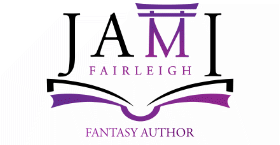
Book Review: The Heroine’s Journey by Gail Carriger

I’m a sucker for writing craft books, and I’ve accumulated a number over the years. But when asked for a list of my most recommended books, The Heroine’s Journey by Gail Carriger is always in my top five.
The Hero’s Journey vs The Heroine’s Journey
If you’ve studied narrative story structure, you’ve probably heard of the hero’s journey. Joseph Campbell popularized it in The Hero with a Thousand Faces (1949). In it, Campbell described the hero’s journey as a universal, 17-beat narrative pattern. It was further refined to a 12-beat pattern by Christopher Vogler in The Writer’s Journey: Mythic Structure for Writers (1998, updated 2007).
The hero’s journey is ubiquitous in craft books and story analysis. So much so that it’s easy to assume all character-based stories rely on some version of it.
However, in The Heroine’s Journey, Carriger argues that a separate narrative structure has always existed. That it is not a modification of the hero’s journey. And that it’s a valid, popular narrative choice for modern storytelling.
The Heroine’s Journey
To prevent confusion, I should point out that the terms hero and heroine describe the characters’ journeys, not their biology or gender expressions. In Carriger’s words:
A female presenting person can undertake a Hero’s Journey.
A male presenting person can undertake a Heroine’s Journey. — Gail Carriger, The Heroine’s Journey
To illustrate this, Carriger shows how Wonder Woman is a hero while Harry Potter is a heroine.
Writers often use the heroine’s journey structure in cozy mysteries, comedies, romance, space opera, and team-focused stories.
Throughout the book, Carriger compares and contrasts the differences between the hero’s and heroine’s journeys using myths, novels, and film. But she does it with a nod and a wink. I enjoyed that this is not a dry, humorless book.

One core difference between the journeys is how the characters achieve success. In the hero’s journey, the hero must voluntarily withdraw from everything he cares about because his isolation drives his success. In contrast, the heroine’s success comes from her ability to network and unite with others. So where isolation is a strength for a hero (and community is a weakness), unity is a strength for a heroine (and isolation is a weakness).
Carriger provides several tips on how to strengthen the components of either journey. She also includes a discussion of how a hero behaves within a heroine’s journey and vice versa. This was super useful to me, because once you understand the fundamental differences between the two types of protagonists, you can use these incompatibilities to introduce tension into your story. For example, Carriger points out most buddy comedies pair a hero with a heroine.
What I liked about the Heroine’s Journey
I found The Heroine’s Journey well organized, informative, and fun.
It improved my understanding of story structure, and how I can manipulate the story beats for greater effect. I prefer stories written with the heroine’s journey beats and am drawn to the themes of found family, togetherness, hope, friendship, and community. It was also fun for me to learn I’d inadvertently written Matthew Sugiyama as a heroine.
Unlike many writing craft books, Carriger brings a fun voice to the book. If you’ve read any of her novels (or her excellent author newsletter!) you’ll know she’s a tad wacky and a lot of fun.

I found Carriger’s analysis of the historical conflation of gender and biological sex interesting. I also appreciated that she clarified how her use of feminine and masculine throughout the book refers to the type of journey and the actions of the protagonists.
The Heroine’s Journey is NOT simply the Hero’s Journey undertaken by a woman.
It’s narratively different, not biologically different. — Gail Carriger, The Heroine’s Journey
I found Carriger’s theories on academic misogyny fascinating. She illustrates how, despite the commercial success of these stories, critics and academics devalue many of these works.
Final Thoughts
The Heroine’s Journey is a fun, informative book. It taught me much about how the two journeys differ. I also have a better understanding of how I can use these differences when thinking about my stories.
On a personal note, I resonate with the heroine’s themes. Connection, unity, and asking for and providing aid are important to me. I also like how the feminine is a strength, not a weakness, in the heroine’s journey.
I have less interest in reading and writing stories emphasizing the hero’s themes. Stories focused around individuality, separation, isolation, revenge, and glory often leave me dissatisfied. Life is hard enough, and I want happy endings in my entertainment!
What I learned in The Heroine’s Journey has done a lot to shape my thinking about what stories I want to work on and how I’d like to structure my author career.
Have you explored the differences between the hero’s and heroine’s journey?
Header image by Mikołaj on Unsplash and manipulated by me. This blog post contains affiliate links. Thank you for your support!

